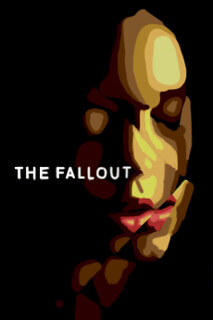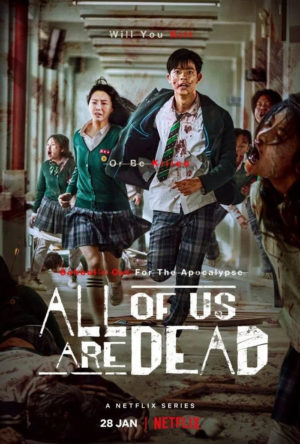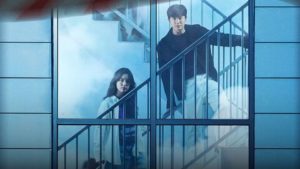“The Fallout” embodies the intricacy of mental health and trauma

“The Fallout”, released on January 27, 2021, starring Jenna Ortega and Maddie Ziegler, embraces the excrescence of confusing emotions that is unleashed through a traumatic experience
March 18, 2022
After the sudden gun threat to a high school and the repercussions of a school shooting, “The Fallout” focuses on the story of a high schooler, Vega, and her journey to overcome the tribulations of the aftermath. Following the vulnerability that comes with being a teenager in this generation, “The Fallout”, directed and written by Megan Parker, captures the development of trauma and its effects on relationships.
“The Fallout”, released on January 27, 2021, starring Jenna Ortega and Maddie Ziegler, embraces the excrescence of confusing emotions that are unleashed through a traumatic experience. The story starts with Vega (Jenna Ortega), a frisky and lighthearted 16-year-old, trapped in a bathroom stall with Mia (Maddie Ziegler) and Quinton (Niles Fitch) during a school shooting. Despite hearing the screams and cries of their fellow classmates, they are forced to remain cornered in their own tears, following intense and vivid connections with each other. The daunting experience leads her to close off herself to others and strains her closest relationships, her family and her best friend Nick (Will Kopp), who is keen on striving for change in the education system.
In the first minutes of the shooting, the movie perfectly captures the ominous encounter of emotions during a school shooting. Focusing resolutely on the raw emotions of the teenagers in the stall, the tears and the whimpers of fear, Megan Parker takes a fresh take on directing. Parker builds an environment for the viewers to really feel as if they are involved in such an occurrence. With the addition of the menacing gunshots and the wails in the background, Ortega steals the show with the realisticity of her action.
As the weeks go by and the days become longer, the intensity of the trauma held back by Vega is festered into something more. Throughout the movie, Parker shows the development and destruction of Vega’s relationships and how the shooting influences her behavior. The movie displays the two sides of trauma, the beautiful and the depressing. The beauty is displayed by those moments of freedom that Vega experiences, with new friendships and connections that come through such a poignant event. Parker depicts these balletic flashes in Vega’s life as something evermore, followed by striking visuals and a natural storyline. On the other hand, Parker characterizes the heartbreaking even more alluringly. Showing the haunting truth behind her decisions, her sudden outbursts of emotions, and the worsening of her mental health. The movie and the directing show the flexibility of both the actors and the directors to capture all the sides of trauma.
Even though “The Fallout” is able to portray such a potent message about trauma it falters when it comes to the naturality of the dialogue. Movies usually depicting Generation Z follow artificial stereotypes and overhyped trends, but “The Fallout” plays a discouraging role in that. Vega’s constant “lol” and “yolo” as a reply in a conversation (not over a text), or a starter, shows an outdated lens of a teenager in this generation.
Conclusively, “The Fallout” illustrates the complexity of trauma after a depressing event. “The Fallout” not only transports the viewer to go on the journey with the characters but also reveals the underlying message for change. With the beautifully crafted ending fit for the relevance of the movie, “The Fallout” presents the worst in our present society and sets itself as a trailblazer for action against school shootings.




